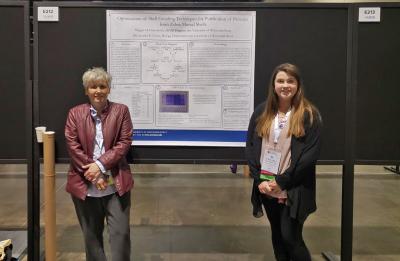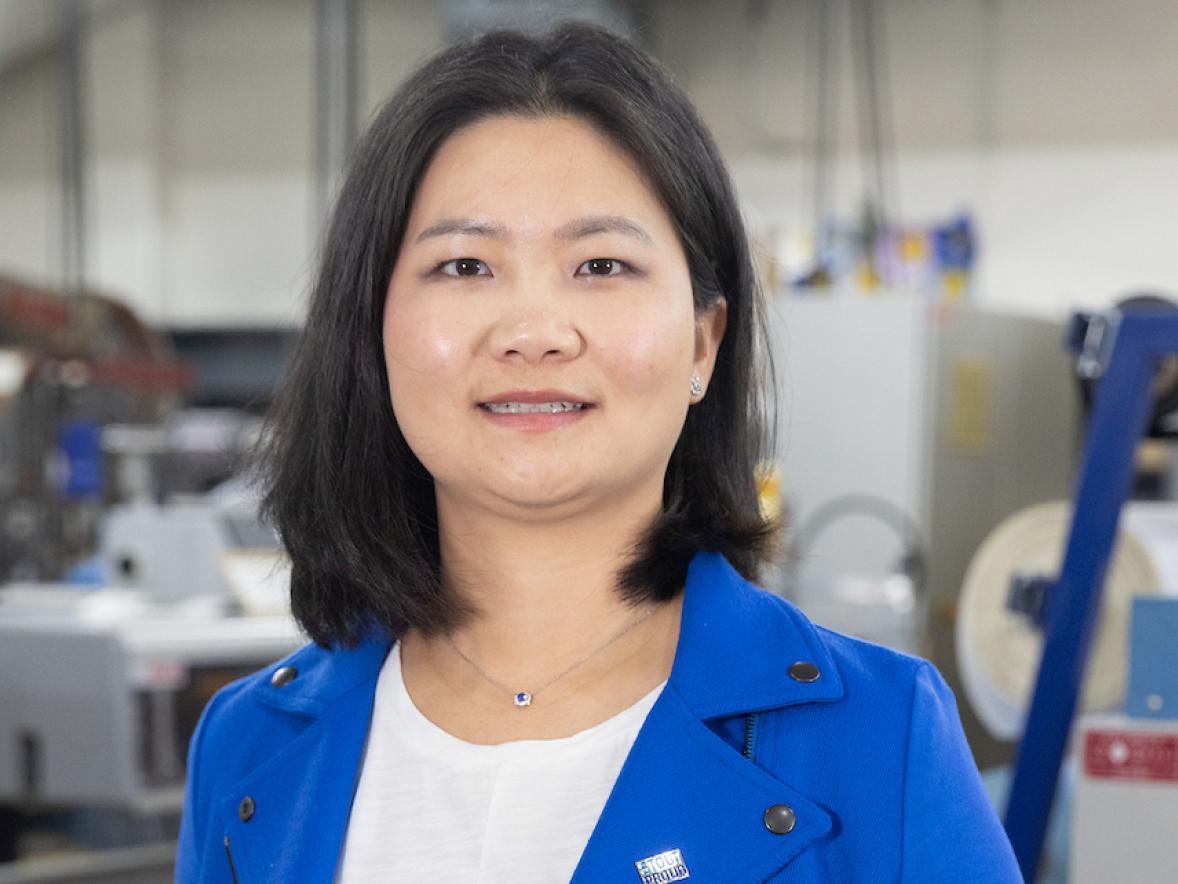Seven UW-Stout students attended Experimental Biology 2019. The annual conference is a gathering of top researchers from across the globe. Researchers in biology, biochemistry, pharmacology, and biomedical sciences come together to share research. This year’s four-day conference was in Orlando, Florida.
Stout’s American Society for Biochemistry and Molecular Biology (ASBMB) members at the conference were club co-founder Kayla Boyd, Gabby Dachel, Maggie Freiermuth, Rochelle Knier, Nabil Junaidi, Richard “D.J.” Shipman III, and Neal Wrobel.
They presented their research projects, attended lectures and networking opportunities. And they learned about ground-breaking scientific studies.
Small School Benefits in Big Science
Experimental Biology 2019 held an undergraduate presentation and poster competition. These events offered students time to share their research with each other and professionals.

Boyd, Freiermuth, and Junaidi were in the poster competition. Many of the 300 students were from larger universities like UW-Madison, Stanford, UCLA, and Yale. Dr. Jennifer Grant, UW-Stout’s ASBMB club chapter advisor, knew her students’ posters were exemplary. Many posters had two or more student or postdoc coauthors. Stout’s student presenters did the work themselves.
Boyd, a senior graduating in Applied Science, thinks this is one of the better reasons to go to a smaller school like Stout.
“The credit goes to the undergraduates because we're the ones who do the majority of the work,” Boyd said. “We stay with these projects from start to finish. Being able to say I was lead on a research project is huge.”
A Stanford student won the competition. But, Freiermuth, a junior in Applied Biochemistry and Molecular Biology, was very pleased with her results.
“I gained a lot of feedback from researchers who were very interested in my project,” Freiermuth said. “It was very fun, and I want to do it again.”
Freiermuth’s research was on the Zebra Mussel, Wisconsin’s invasive shelled species. She researched the shells of Zebra Mussels to find their protein composition. And tried to see if they could be a viable use for antibiotics.
“This could give us a way to make the invasive pest an asset,” explained Freiermuth. “I plan to go to medical school, and I know that my research will help me with my future plans.”
She noted the support she received from Stout faculty. They encouraged Freiermuth to develop her research. And build critical thinking skills in the lab. Freiermuth believes it makes a difference when you’re passionate about your research. She sees this passion in her peers and is very proud of their accomplishments.
Knier presented on the isolation of anaerobic gut microbiota from Honey Bees. She attempted to develop a probiotic to fight a gut-infecting microbe, a disease in Honey Bees. After long hours in the lab and more than one instance of starting over, she is making headway.
“I've asked professors for tips and tricks along the way, but it was my brainchild, my procedure, my work,” Knier said. “An apiarist talked with me for an hour at the presentation. He was happy to see that someone was doing research on bees.”

Boyd’s Yearlong Research
During her senior capstone, Boyd studied a native fish disease, Black Crappie Sarcoma. She began working on her thesis topic a little more than a year ago.
Boyd was talking with her grandparents about a fish disease they first saw in their lake ten years ago. But in asking around, she found there was no known cause for the sarcoma.
“We had known about this disease for 40 years and that baffled me,” Boyd said. “Every attempt at identification didn't work.”
So, she made it her summer’s work to study fish diseases in Wisconsin and to find clues to what might be the cause. Boyd asked fishermen what they saw when catching Black Crappie. She poured over papers and pictures until she felt ready to tackle projects in the lab to gather more data.
Back at school, Boyd relied on the Proteomics Research Lab. She worked with her professors for advice on techniques and materials. Boyd expanded on her study during her Proteomics course with Dr. Grant. She studied the differences in proteins between healthy and diseased tissue in crappies.
“Kayla’s attention to detail is quite exceptional, as well as her perseverance,” Dr. Grant said. “The entire class benefitted from observing the experimental pathways she explored.”
Dr. Grant explained Boyd’s methods led her to new forms of investigation. She developed a liquid nitrogen-based pulverization of tissues. Tissues she studied included fin material and organ samples.
“We haven't found anything conclusive yet,” noted Boyd. “There are a lot of avenues to explore before we can say anything about this disease with certainty. But, when I started, I didn't imagine that my research was going to be as impactful or important as it became.”
Outstanding Undergraduate Researcher Award
For her persistence with her Black Crappie Sarcoma Project, Boyd received the Outstanding Undergraduate Researcher of the Year award.
Dr. Grant was the nominating faculty member. She believes Boyd is an exceptionally strong student with much potential.
“Kayla has pushed our understanding of the disease closer to a solution,” Dr. Grant said. “Kayla is a natural leader in the sciences.”
Boyd was surprised to receive the OUR Award. She was grateful for the high recognition and the opportunity to do her research.

Making a Difference
Boyd relies on citizen scientists for their observations. She notes the details of their observations for her research.
“Anyone can be a scientist,” Boyd said. “It's sad people think they need to be this unattainable level of smart to make a difference in the scientific community. Anyone can contribute to the larger project: understanding life."







